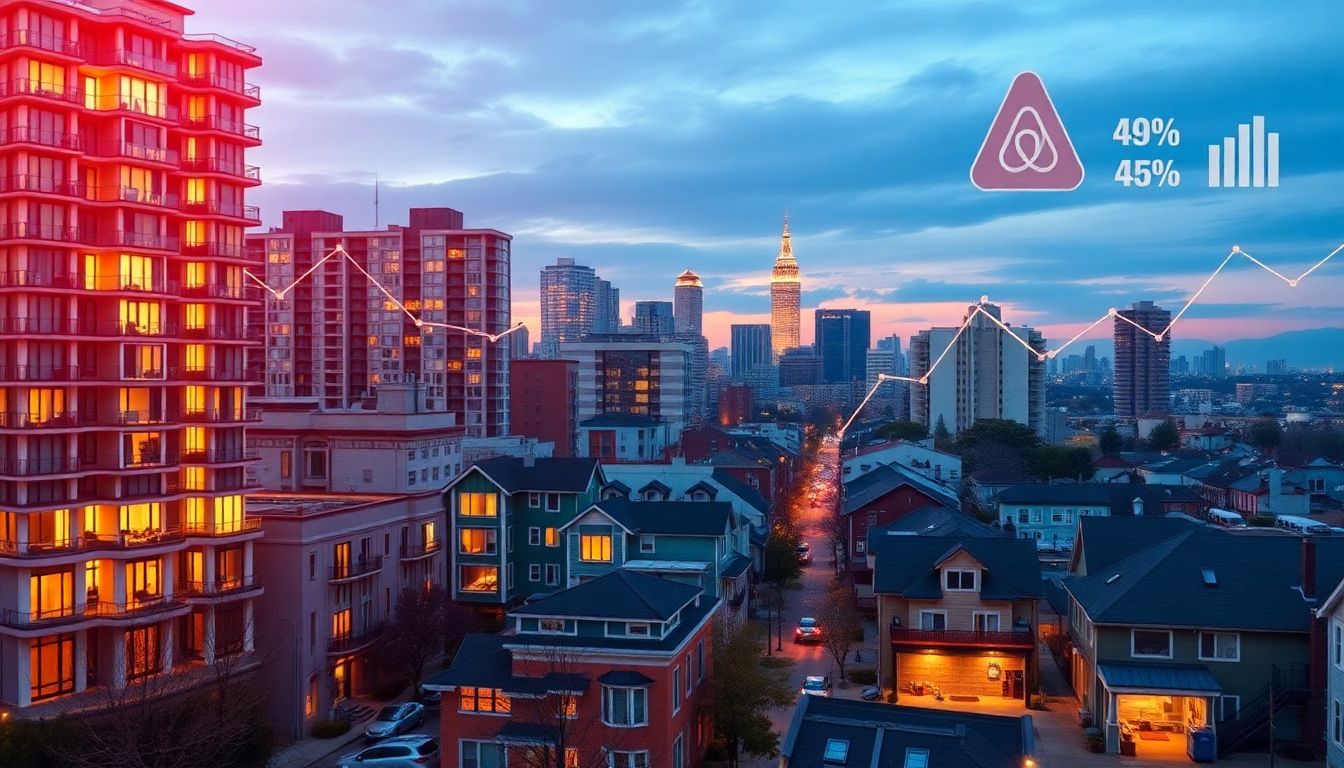Introduction
Your Airbnb occupancy rate is the key to earning more. If you don’t know it, you might be leaving money on the table. Different cities have extremely different occupancy levels, and that can make or break your rental income. In this guide, we’ll give you brief, data-driven information so you can plan accordingly and boost your profits.
Understanding Airbnb Occupancy Rates and Why They Matter
What Is an Airbnb Occupancy Rate?
An occupancy rate refers to how often a property is occupied. It is calculated by dividing booked nights by available nights. So, if your property is booked 20 nights out of a 30-night month, your occupancy rate is approximately 66%. Very successful hosts manage to get over 70%, but it really depends on the city and the time of year.
Why Occupancy Rate Matters for Profitability
A high occupancy rate equals more nights booked, which leads to more income. But it’s not just about bookings; it’s about balancing occupancy with nightly rates. If you’re booked all the time but charge too little, your profits suffer. Finding the right mix of a good occupancy rate and a fair price is essential to maximize earnings.
Factors Influencing Occupancy Rates
There are many variables that determine how often your property is rented. Location is huge—tourist destinations have higher occupancy rates. Time of year is also relevant—summer and holidays are peak times. Competition from other rentals, events in the area, and even the health of the economy can impact occupancy too. Keep an eye on these variables so you can adjust your plan.
Top Cities for High Airbnb Occupancy Rates
Top Cities Based on Occupancy Data
Evidence shows that cities like New York, San Francisco, and Miami are busy year-round. New York, for example, has occupancy rates of over 75% on average. These cities attract travelers with landmarks and events that fill properties. San Francisco’s tech sector and conferences also maintain high occupancy year-round.
Case Study: Successful Airbnb Hosts in High-Occupancy Markets
Top hosts manage this by putting guest experience and quality first. A majority of them invest in professional photos, thorough descriptions, and quick responses. They even offer extras like free Wi-Fi and area guides. Some even set up flexible check-in hours to accommodate travelers’ schedules. These gestures sustain their high occupancy, and positive reviews keep the cycle going.
Tips for Entering High-Occupancy Markets
Do research before jumping in. Research local laws and demand patterns. Keyword list with what travelers search for. Offer competitive nightly pricing and extras. Understanding what travelers want can set you apart from other hosts significantly.
Cities with Medium to Low Airbnb Occupancy Rates
Making Sense of Challenges in Cities with Lower Occupancy
Other cities struggle with reservations due to seasonal slumps or strict regulations. Locations that are less frequented or have strict regulations would have lower occupancy. It is possible to develop these markets, though, if you seize the correct opportunities. New cities or towns with new activities might be worth considering.
Strategies to Boost Occupancy in Poorer-Performing Cities
Dynamic pricing based on demand. Use good photographs to make your listing stand out. Highlight local hotspots and unique amenities. Offer flexible check-in and polite cancellation policies. These small changes can increase bookings, even during slow periods.
Comparative Analysis: Profitable Opportunities vs. Risks
While some cities offer higher occupancy, they might also entail higher costs or stricter regulations. Balance projected revenue with risks like licensing fees and market competition. Sometimes a lower occupancy city with fewer regulations and less costly expenses will be more profitable in the end.
Tools and Data Sources for Analyzing Occupancy Rates by City
Reputable Data Sites
Websites like AirDNA and Inside Airbnb provide you with up-to-date occupancy rates. They track the trends over seasons and enable you to recognize patterns. Transparent also provides some excellent data regarding market demand. Utilize these tools to keep you ahead of the curve and adjust your plans accordingly.
Using Local Regulations and Tourism Data
Learn local laws. Regulations can limit your rental days or require permits. Check city tourist boards for visitor data and event calendars. Such data allows you to forecast demand and schedule your listings ahead of time.
Actionable Analytics for Strategic Planning
Track seasonal fluctuations with the help of software that analyzes past bookings. Set realistic expectations based on historical data. For example, if occupancy is low in winters, plan special offers or throw in extra amenities to ensure steady bookings.
Practical Tips to Maximize Airbnb Profit Based on Occupancy Rates
Improving Listing Visibility and Pricing
Implement dynamic pricing software such as Beyond Pricing or PriceLabs to set rates dynamically. Optimizing your listing’s SEO—by incorporating highly searched keywords—is critical to rank high in search results. The more your listing is exposed, the greater your occupancy levels.
Enhancing Guest Experience
Happy guests leave excellent reviews, which attract more travelers. Be responsive, offer thoughtful amenities like coffee or local snacks, and personalize their stay when possible. A memorable experience often leads to repeat bookings and better ratings.
Managing Occupancy Fluctuations
Plan special offers during off-peak periods to snag last-minute travelers. Expand into multiple cities to avoid over-reliance on one market. That minimizes risk and offers multiple income sources in various locations.
Being Compliant with Local Laws
Check regularly for updated legislation in your area. Failure to comply can lead to fines or property closure, which cuts into profit. Being informed and compliant guarantees that your rental business is issue-free and profitable.
Conclusion
Knowing how occupancy varies by city gives you an absolute edge. It enables you to choose the right markets, set competitive prices, and offer what travelers are searching for. Fact-based decision-making is the best way of turning your Airbnb into a steady, profitable enterprise. Keep a close eye on trends, refine your strategy, and always look for ways to improve your listing. Remaining flexible and informed is the smartest way to stay ahead in the competitive world of short-term rentals.
